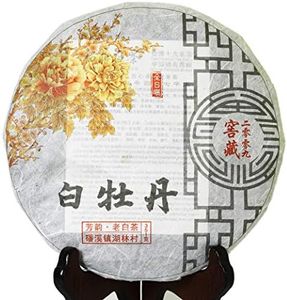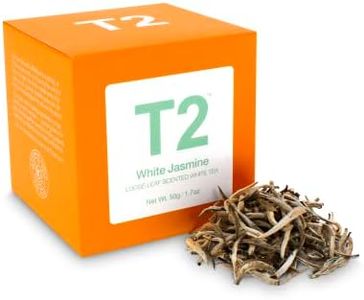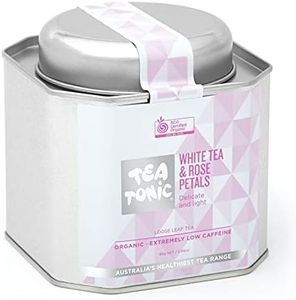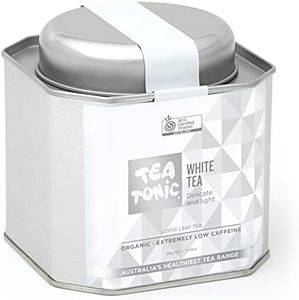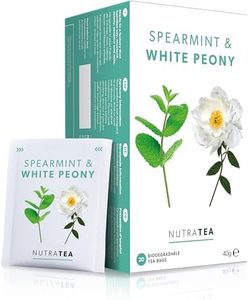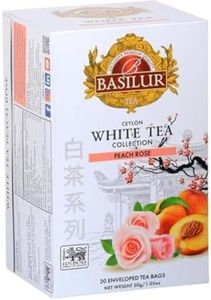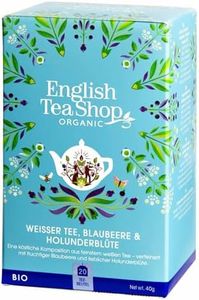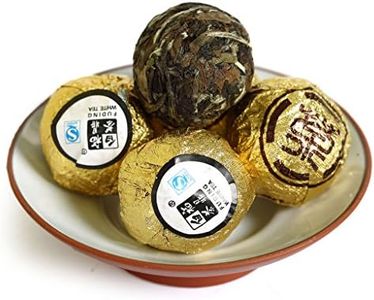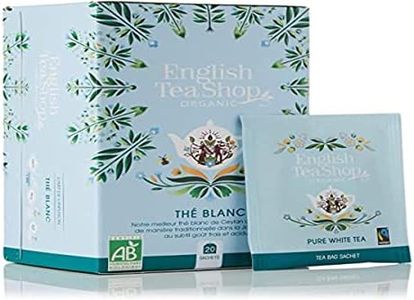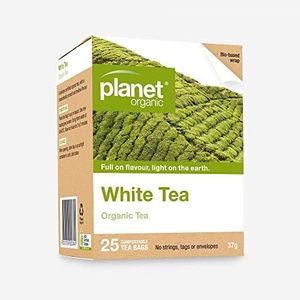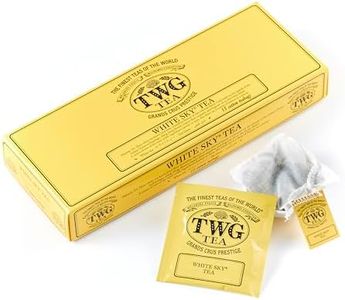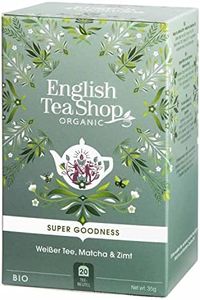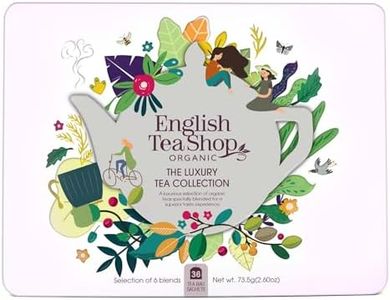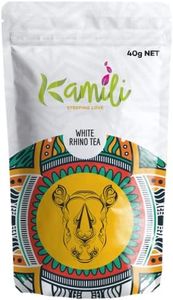We Use CookiesWe use cookies to enhance the security, performance,
functionality and for analytical and promotional activities. By continuing to browse this site you
are agreeing to our privacy policy
10 Best White Teas
From leading brands and best sellers available on the web.By clicking on a link to a third party's website, log data is shared with that third party.
Buying Guide for the Best White Teas
Choosing the right white tea can be a pleasant and relaxing process if you know what to look for. White tea is known for its delicate flavor, gentle aroma, and health benefits. When shopping for white tea, it's important to consider its origin, type, appearance, aroma, flavor profile, and freshness. Understanding these key aspects will help you match the tea to your personal taste preferences and intended use, whether it’s for daily sipping, special occasions, or health reasons.Type of White TeaWhite tea comes in several varieties, with the most common being Silver Needle, White Peony, and Shou Mei. Silver Needle is made from only young tea buds and is the rarest and most delicate, often with a subtle floral taste. White Peony uses both buds and leaves, offering a stronger, slightly fruity flavor. Shou Mei is made from older leaves and has a deeper, more robust taste. Consider the type based on your desire for subtlety or robustness in taste; lighter types are great for gentle sipping, while stronger ones can be more satisfying if you prefer fuller flavors.
OriginThe region where white tea is grown affects its flavor and quality. Traditional white teas are from Fujian, China, but other regions like India and Sri Lanka also produce white teas. Teas from different origins can have distinct flavor notes—Chinese teas are often floral and sweet, while other origins might offer nuttier or more herbaceous flavors. If you prefer classic flavors, stick with traditional origins, but if you like to experiment, try teas from various regions.
Leaf AppearanceThe appearance of white tea leaves tells a lot about its quality. High-quality white tea has whole, unbroken leaves or buds covered with fine, silvery-white hairs. Lower quality teas have broken or oxidized leaves, often darker in color. If you value purity and high-quality flavor, look for teas with even, whole leaves and a silvery sheen. If you're less concerned with appearance and more with affordability or stronger flavor, less pristine leaves may also suit you.
AromaSmelling the tea leaves can give clues about freshness and flavor. Fresh white tea should have a light, sweet, and floral aroma. A stale or musty smell may indicate old or poorly stored tea. A pleasant aroma often predicts a better-tasting brew, so trust your nose—choose a tea that smells inviting to you.
Flavor ProfileWhite tea flavors can range from very delicate and sweet to slightly grassy or fruity. Some are subtle, while others have stronger body and complexity. If you enjoy lighter flavors, seek out descriptions like 'delicate,' 'floral,' or 'honeyed.' If you prefer a bit more punch, look for teas with 'fruity,' 'nutty,' or 'robust' notes. Let your flavor preference guide your choice; lighter is better for a refreshing drink, and fuller for a more satisfying cup.
FreshnessWhite tea is best enjoyed fresh, as its delicate flavors can fade over time. Freshness is often indicated by a recent harvest date and proper packaging. Look for teas that provide information about when they were picked and choose sealed, airtight packaging. Fresher tea will taste brighter and more fragrant, so if you’re seeking the best flavor, prioritize freshness.
